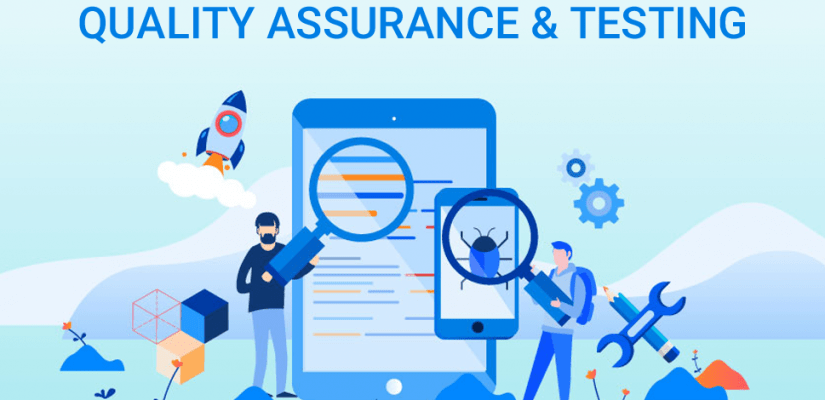Introduction
If you are a Software Tester or a Software Developer, Static Application Security Testing and Dynamic Application Security Testing are 2 of the most common short forms that you must be aware of, but these terms are frequently misunderstood. Keep reading to know the reason behind it…
What’s the main difference between Static Application Security Testing and Dynamic Application Security Testing?
Ever wondered whether it’s compulsory to use them both? Or is one sufficient?
We have the answer to many such questions so that you can confidently perform app security testing.
The Static App Security Testing tools are put to use at the primary stage of the Software Development procedure for testing the app from inside out.
They never need a running system for performing the evaluations. Instead, these tools work on testing the source code, the byte code, and the binaries line by line for uncovering the weaknesses in the software before it gets deployed. By finding the loopholes in the code at an early stage, weaknesses in the software can be handled before the attackers find them and they turn out to be threats to an enterprise.
A Few Other Significant Benefits Of Static Application Security Tools Are:
- They discover theoretical problems searching for familiar vulnerability patterns that developers might not know about.
- The testing procedure can be easily automated. It is scalable, and they are perfect for problems that can be discovered on their own, like SQL Injection Flaws.
- The developers easily understand the output without any complications, as these tools recognize the proper location in the code where the problematic FCS is there. SAST tools are not ideal, but they bring about a significant chunk of challenges.
- They are primarily complicated, hard to use and do not work correctly. They also demand access to the source code, byte code, or binaries that many organizations or individuals might avoid handing over to the app testers.
- Static Application Security Testing tools can’t recognize the dangers outside the app code, like problems in 3rd party interfaces. More than that, every SAST tool tends to target a potentially weak area.
- A benchmarking study conducted by the National Security Agency Center for Assured Software discovered that the average SAST tool covers about 8 out of the 13 weakness classes and only 22% of the errors in every weakness class. The moderate Static Application Security Tool will discover just 14% of the prospective dangers in an app’s code based on these numbers.
- All these tools tend to discover the various classes of weaknesses leading to the overlapping between the results of the multiple SAST tools being the perfect industry practice. This technique can be costly.
- SAST Tools are assigned a particular time and place, and the usage of these tools is excellent. Usually, Software Developers would use many SAST tools when developing an app to find out the weak areas before they become security mishaps for the end-users. A few of the most prominent players in the SAST space are CodeSonar, Veracode, and Checkmarx.
A Guide To Dynamic Application Security Testing (DAST)
The fundamental difference between Static Application Security Testing and Dynamic Application Security Testing that most security testers know about is that Static Application Security Testing is a procedure that happens when the app runs.
Multiple attempts are taken to penetrate the app in different ways to recognize the hidden dangers, including those outside the code as well as the third-party interfaces. The Source Code, the Byte Code as well as the binaries are not required with DAST, and it is simple to use as well as cheaper than SAST tools.
Another thing is that Dynamic Application Security Tools cannot isolate the proper area of weakness in the code and face problems in following the coding rules. As these tools need a running app, you can’t use them at an early stage in the development procedure. These tools are also not capable of copying an attack by somebody possessing internal knowledge about the same app.
By keeping the outside-in perspective, DAST tools bring valuable insight and are perfect for use before an app goes live and when you don’t have the source code for testing. In addition, there are commercial and open-source DAST Tools that include BurpSuite, OWASP ZAP, and AppScan.
How To Bring Down The Risks By Mixing App Security Testing Tools?
Both kinds of testing tools have advantages and disadvantages and support each other. One of the types is used at an early stage of the software development process and another one after some time. For the best comprehensive coverage, innumerable Static Application Security Tools and Dynamic Application Security Tools must be put to use to detect potential dangers.
This brilliant mix of SAST and DAST is known as Hybrid Analysis or Hybrid App Security Testing- an approach used by most penetration testers nowadays.
Whenever you use more than 1 tool, the problem is that every tool generates reports with the use of various naming conventions as well as severity ratings. This makes it hard to mix and compare the newfound vulnerabilities.
Code Dx is the answer for this typical problem faced by Software Developers and security testers. It brings together the results of many static and dynamic analysis tools and makes the results typical, thus helping to compare them on an average severity scale. Developers and security professionals quickly know that these weaknesses were discovered with the help of many tools, which is different from those discovered by just one.
By cross-referencing results derived from Static Application Security Tools and Dynamic Application Security tools, you can recognize that the potential dangers can be prevented. After this, you can completely understand the real threats to your app and uncover the dangers. These significant problems demand immediate focus.
Final Thoughts
There is no winner when it’s about Static application security testing vs. Dynamic application security testing. Even though a winning approach uses both kinds of tools to ensure that your app is safe, it might look dangerous. Still, it’s worth your time and effort so that you don’t have to handle the lousy reputation and excessively spent revenue that comes along with a security gap.
At HikeQA software consultancy firm, our dynamic testing team is an expert at Static and Dynamic Application Security Testing. We assure you of high standard services. Get in touch to test your application with us.

















